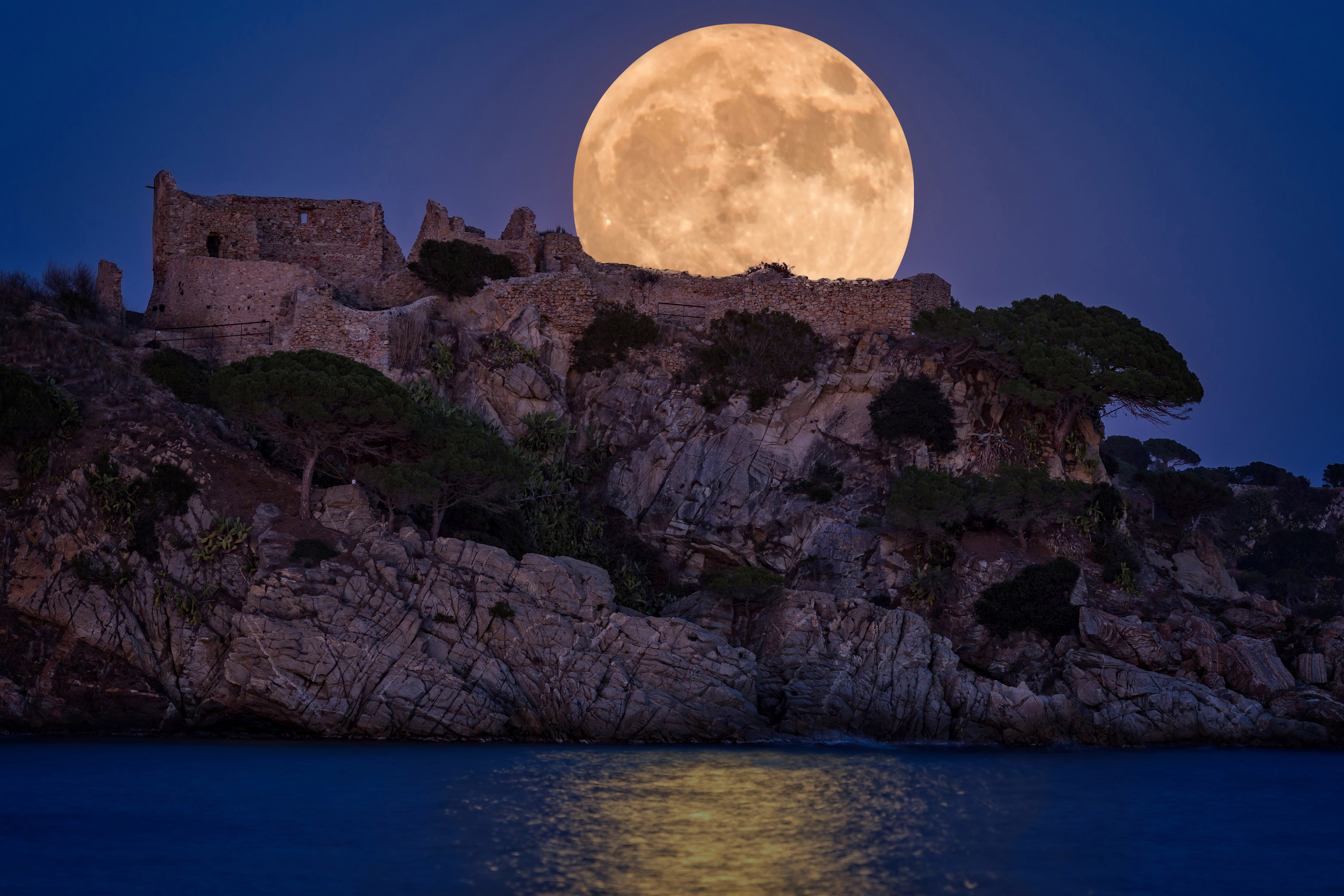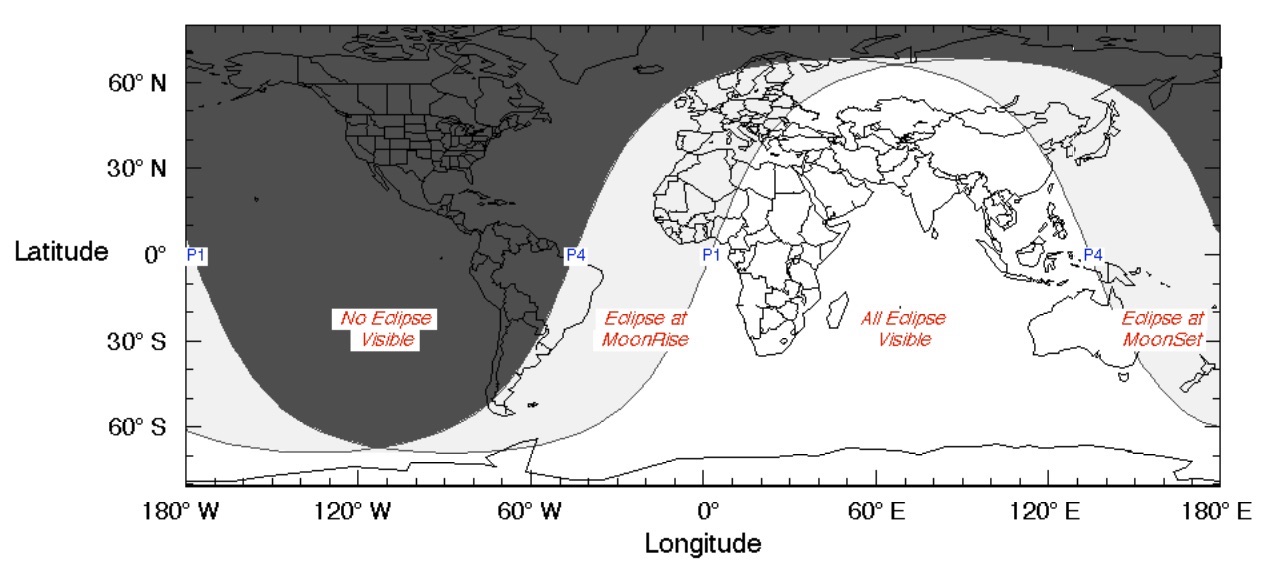Get ready for the full 'strawberry' moon on Friday

Friday's full moon, also known as the strawberry moon, will light up the night sky in most of the Western Hemisphere (including North America), but that's not the case the world over.
In much of the Eastern Hemisphere, the full moon on Friday (June 5) will showcase a penumbral lunar eclipse, meaning that the strawberry moon will appear dark and silvery.
For anyone bummed out about missing the penumbral lunar eclipse, just wait one month; on July 4, North America will get a chance to see a different penumbral lunar eclipse, according to Space.com, a sister site of Live Science.
Related: This amazing photo reveals a lunar eclipse like you've never seen it before
The moon's exact moment of fullness happens at 3:12 p.m. EDT (19:12 UTC) on Friday, according to NASA. However, because the moon won't be visible in North America at the point, your best bet is to gaze skyward at moonrise, when the slightly-less-full moon will begin its ascent at 8:23 p.m. EDT (shortly before sunset at 8:31 p.m. EDT), according to Travel and Leisure.
The strawberry moon is named for the relatively short strawberry growing season in northeastern North America; it's a name recognized by most Algonquin tribes, the now-defunct Maine Farmer's Almanac reported in the 1930s, according to NASA.
In fact, June is prime strawberry growing time for most of the United States, according to the food site Epicurious, which also pointed out that strawberries are a favorite, ranking sixth as the country's most popular fruit. If you have a sweet tooth, go for wild strawberries, which tend to have sweeter, tangier flavors than the more firm, waterier store-bought ones, Live Science previously reported.
Sign up for the Live Science daily newsletter now
Get the world’s most fascinating discoveries delivered straight to your inbox.
Other names for this full moon include the mead moon, honey moon, rose moon and LRO moon (for the Lunar Reconnaissance Orbiter, which was launched toward the moon June 18, 2009), according to NASA. Whatever you call it, this will be the last full moon of spring, before the summer solstice on June 20.
On the other side of the world, June's full moon will feature a penumbral lunar eclipse. Those in the Southern Hemisphere, including Africa, Australia and Central and Southern Asia, will see the penumbral lunar eclipse in its entirety, while the eastern coast of South America will see the end of the penumbral eclipse at moonrise, according to Space.com.
Related: Glitzy photos of a supermoon
There are three kinds of lunar eclipses, which can happen only during a full moon. During a total lunar eclipse, when the moon passes directly through Earth's full shadow (or umbra), the moon appears blood-red, colored by the world's sunrises and sunsets. During a partial lunar eclipse, the umbra darkens only part of the full moon, making a chunk of the moon appear darker than the rest.
For the penumbral lunar eclipse this Friday, the strawberry moon is dipping 57% into the penumbra, or outer shadow, of Earth, Travel and Leisure reported. The lunar show begins at 1:45 p.m. EDT (17:45 UTC), but to catch the maximum eclipse, tune in at 3:24 p.m. EDT (19:24 UTC), according to timeanddate.com, which explained that "the moon is below the horizon during this eclipse, so it is not possible to view it in New York." The penumbral eclipse ends 3 hours and 18 minutes later at 5:04 p.m. EDT (21:04 UTC).

To watch a live stream of the eclipse, tune into the Virtual Telescope, which will get a peek at part of the penumbral lunar eclipse as it rises over Rome.
The celestial show doesn't end there. According to timeanddate.com, "a solar eclipse always occurs about two weeks before or after a lunar eclipse." In this case, the solar eclipse — when the moon is directly between the sun and Earth — will happen on June 21. But, just like the strawberry moon's penumbral lunar eclipse, this eclipse won't be visible in North America.
- Photos: 2017 Great American Solar Eclipse
- Photos: Super blood wolf moon eclipse stuns viewers
- In Photos: Ancient Rock Art Depicts Total Solar Eclipse in Chaco Canyon
Originally published on Live Science.
OFFER: Save 45% on 'How It Works' 'All About Space' and 'All About History'!
For a limited time, you can take out a digital subscription to any of our best-selling science magazines for just $2.38 per month, or 45% off the standard price for the first three months.

Laura is the archaeology and Life's Little Mysteries editor at Live Science. She also reports on general science, including paleontology. Her work has appeared in The New York Times, Scholastic, Popular Science and Spectrum, a site on autism research. She has won multiple awards from the Society of Professional Journalists and the Washington Newspaper Publishers Association for her reporting at a weekly newspaper near Seattle. Laura holds a bachelor's degree in English literature and psychology from Washington University in St. Louis and a master's degree in science writing from NYU.











